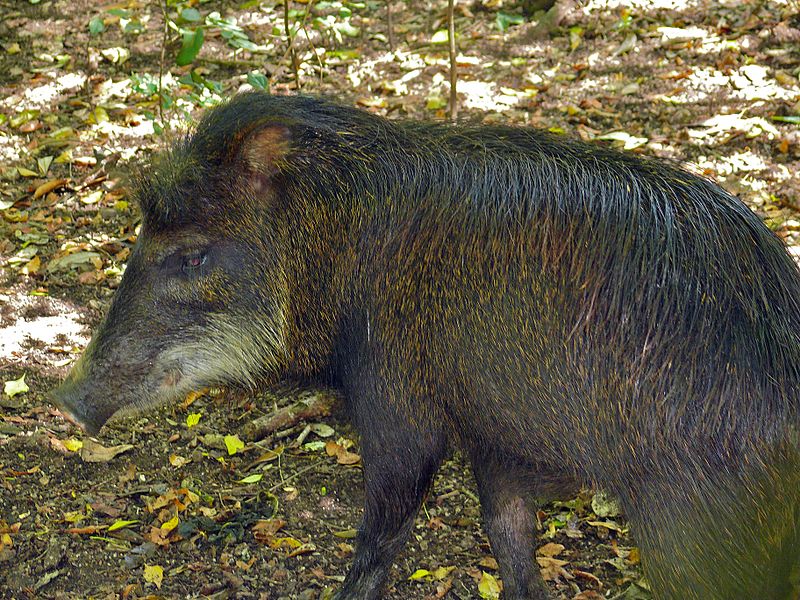Many predict that the new canal plan, backed by Chinese billionaire Wang Jing and his newly formed Hong Kong Nicaragua Development Group, will meet a similar end. Wang, a telecommunications tycoon, has never spearheaded a construction project, let alone the largest civil engineering endeavor the world has ever seen. Last year, Wang also reportedly lost 80 percent of his fortune after a crash in the Chinese stock market.
Some economists dispute the financial viability of the project, questioning whether shipping companies would choose the new Nicaraguan canal over the nearby Panama Canal. And the project’s own ESIA states that there may not be enough water to even operate within the 175-mile waterway.
Despite these questions, HKND and the Nicaraguan government insist that the project will go forward.
A rushed ESIA?
The ESIA commissioned by HKND was completed in less than two years by the British firm, Environmental Resource Management. ERM officials described the schedule as “aggressive,” and were unable to go beyond baseline studies — typically conducted before a project is even put into consideration. In the case of the Nicaraguan canal, ERM was asked to do the work after the canal was approved for construction.
In general practice, baseline studies conducted upfront are followed by additional studies carried out by a project’s backers in order to design an effective environmental mitigation plan.
 Baird’s tapir (Tapirus bairdii), one of the species that would be threatened by the canal if it is built. Photo by Chris Jordan
Baird’s tapir (Tapirus bairdii), one of the species that would be threatened by the canal if it is built. Photo by Chris Jordan
While HKND is now funding additional investigations into the canal’s feasibility, the company has not indicated if it plans to look further at the canal’s impacts on biodiversity.
As a result, environmental groups, have grown increasingly worried over the lack of wildlife research in the planning process. They note that there are still many missing pieces of information for formulating an effective plan to reduce environmental impacts.
The Nicaraguan government continues to push the canal, despite these complaints from the scientific and environmental communities. In November, the government approved the ESIA, with canal spokesman Telémaco Talavera saying: “the final net balance from the economic, social, and environmental perspective is absolutely positive for Nicaragua.”
The bigger biodiversity picture
While ERM’s biodiversity studies were restricted narrowly to the canal zone, the new mammal study examined wildlife populations in a wider area: the entire northeastern section of Nicaragua. This remote region will experience the largest impact from the canal, and has long been considered the country’s wildlife stronghold.
Using camera traps, researchers tracked eight species of mammals including the jaguar (Panthera onca), white-lipped peccary (Tayassu pecari) and Baird’s tapir (Tapirus bairdii) — all endangered in Nicaragua.
 A jaguar as seen by one of the study’s camera traps. Image courtesy of Courtesy of Panthera/GWC/MSU
A jaguar as seen by one of the study’s camera traps. Image courtesy of Courtesy of Panthera/GWC/MSU
The study concluded that an artificial lake used to fill the canal would flood most of the remaining habitat for the three endangered species. The researchers also cautioned that the canal would create a barrier separating the mammal populations of the southern portion of Central America from those in the north, hindering genetic mixing.
“You’re in effect creating these habitat islands,” Wes Sechrest, chief scientist at Global Wildlife Conservation said. “In the long term you will have reduced gene flow, which can create all kinds of problems.”
To reduce the canal’s impact, the study recommends moving the artificial lake’s currently planned location, and putting in small islands between which animals could move. The study also urges that HKND make a strong commitment to protecting the remaining forests in the region and to establishing mechanisms for animals to cross over canal infrastructure.
The study scientists are not the only experts to deem HKND’s ecological mitigation plans inadequate. According to a report by an independent panel at Florida International University, which reviewed sections of the ESIA before it was finalized, the risk of extinction to endangered species in Nicaragua was not considered at all.
 White-lipped Peccary (Tayassu_pecari). Photo by Bernard Dupont licensed under the Creative Commons Attribution-Share Alike 2.0 Generic license
White-lipped Peccary (Tayassu_pecari). Photo by Bernard Dupont licensed under the Creative Commons Attribution-Share Alike 2.0 Generic license
“We are talking about one of the biggest infrastructure projects in the history of the planet, so we would hope that if it does go forward that these recommendations would be taken seriously,” Sechrest said. “The ideal situation is that the canal is not constructed, but if there is no mitigation, this would be the end of the Nicaraguan [wildlife] corridor.”
Staving off a biodiversity disaster
While the canal’s potential for ecological damage is great, some believe that it could provide an opportunity to slow the environmental degradation that already grips Nicaragua.
Even without the canal, farmers in Nicaragua’s east are already encroaching on protected areas and deforesting the region at a rapid pace. If the current rate of deforestation continues, biologists predict that the most important of these protected lands will be lost within the next several decades.
“The environmental disaster [envisioned] along the proposed route is already underway,” wrote Jeffery McCrary, a fish biologist who worked on the ERM study, in an article for Nature in support of the canal. “We saw the destroyed rivers and wetlands, and vast expanses of pastures which maps designate as forests, and we were appalled.”
According to McCrary and other like-minded scientists, proper canal management could work to preserve what little is left of Nicaragua’s protected forests. Money from the project could pay for proper policing of nature reserves, and to reforest areas that have been clear-cut. Though mitigation measures — adding security for nearby protected areas and reducing deforestation surrounding the canal — are listed in HKND’s plans, the company has not yet earmarked funds or released specific strategies to implement them.
“I do think things can be done to mitigate this [environmental damage] and make sure that the corridor is not lost,” Panthera’s Salom said. “But we would need a lot more support to guarantee that, and we have seen very little interest from the government or the canal company.”
Â
Citation:
Jordan, Christopher A., Schank, Cody J., Urquhart, Gerald R., and Dans, Armando J. (2016) Terrestrial Mammal Occupancy in the Context of Widespread Forest Loss and a Proposed Interoceanic Canal in Nicaragua’s Decreasingly Remote South Caribbean Region. PLOS ONE PLoS ONE 11.3: n. pag. Web.
Â
Â
Big Cats, Biodiversity, Canals, Conservation, Controversial, Deforestation, Endangered Species, Environment, Jaguars, Threats To Rainforests, Tropical Forests, Wildlife, Wildlife Corridors
Central America, Latin America, Nicaragua
Source link : https://news.mongabay.com/2016/05/nicaraguan-canal-threaten-endangered-species-says-study/
Author :
Publish date : 2016-05-09 03:00:00
Copyright for syndicated content belongs to the linked Source.












